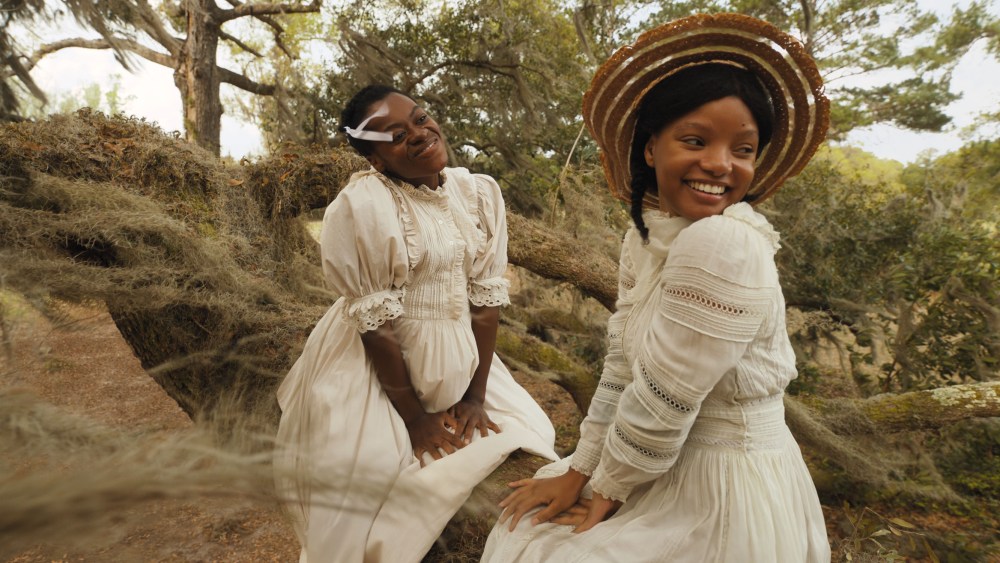‘The Color Purple,’ ‘Anatomy of a Fall’ Boost Young Awards Season Contenders
The way an actor approaches and prepares for a role can be different with each project, and in some instances, the material presents specific obstacles that make the experience even more personally fulfilling or transcendent. This is true for actors of any age but is especially notable for a trio of younger talent in this awards season.
One of the year’s best performances arrived in last summer’s coming-of-age dramedy, “Are You There, God? It’s Me Margaret,” from the now-15-year-old Abby Ryder Fortson. Based on the 1970 novel by Judy Blume, the film centers on an 11-year-old girl navigating the early stages of womanhood and tensions surrounding her parents’ interfaith marriage (her mom is Christian, her dad is Jewish).
Exploring a character that’s going through intense personal changes was something that Fortson knew all too well. “It came at the right time for me, because I was going through the exact same things, and it really helped me to look at my younger self with a little more kindness,” Fortson says.
“Nobody is perfect, and we’re all just messy humans trying to figure ourselves out. And I think that’s why this story has resonated with people throughout the years.”
Fortson studied the script line by line for two months to really delve into the character before the North Carolina shoot began. She wrote letters to her onscreen grandmother Kathy Bates to build backstories for their relationship and learned about life in an era that existed long before she was even born. The result is an honest, authentic portrait of a young life that resonates for any generation.
“I want to make stories that matter to people,” Fortson notes. “The way art can inform our regular lives is something that’s special in a way that nothing else can really touch.”
Frequently, younger actors are brought on to share a role with another actor — playing the youthful version of a character. This was the case for the Phylicia Pearl Mpasi, making her big-screen debut as the young version of Celie (later played by Fantasia Barrino) in the bold new musical incarnation of “The Color Purple.” Blitz Bazawule directs the dynamic telling of Alice Walker’s 1982 novel, which was previously adapted into a 1985 film by Steven Spielberg before becoming the Broadway musical upon which this film is based.
For Mpasi, the chance to be a part of a production produced by none other than Oprah Winfrey and Spielberg was something that she had to take. “I got lucky. Steven Spielberg is always looking for new talent, and the first movie is what allowed Oprah and Whoopi Goldberg to break through, so it’s always great and so important when people are in a position to open the doors for others,” says Mpasi, who went from making YouTube videos in her basement to working with a top-tier cast in her first film.
The actor also had to figure out how to balance her performance in relation to what Barrino was doing as the older version of the character. “Just because of the nature of the schedule, we didn’t get to sit down together to talk about Celie,” notes Mpasi. “But what’s so great about Alice Walker’s characters is that they are so relatable, and that’s why the story has stood the test of time.” Mpasi went to set whenever she could to watch Barrino “so I could see how she’d stand and move her hands and talk, just to be sure that I was laying the groundwork.”
Mpasi cites a scene where Celie is separated from her beloved sister Nettie as particularly tough to film. “I knew that it was going to be very important, and that the roller coaster had been working its way up to that moment,” she recalls. Other elements compounded the challenge. “With the added elements of shooting the scene at night and in the rain, I just couldn’t separate myself from the character or the process. It was very challenging to just end filming and leave that character in the moment.”
Milo Machado Graner also had to grapple with intense emotions and believably portray his character’s vision impairment for the legal thriller “Anatomy of a Fall,” in which he plays an 11-year-old boy whose mother is accused of murdering his father. “My preparation for the role took some time,” says Graner. “We visited multiple institutions for the blind and visually impaired, taking into account that there were 1,000 different types of blindness, to understand how to position the gaze believably, how to position the body and gait correctly.”
Graner’s character also has to mentally process the notion of potential homicide within his family. “I’ll admit that I felt a lot of pressure at the beginning of the rehearsals, because there are blind and visually impaired people in my family, and I was intimidated by the complexity of the role — including the aspect of blindness, since this supposes a total upheaval in the way of seeing the world around you,” he says.
He strove to always give the most to director Justine Triet. “I’m not at all an instinctive actor, so I had to try things multiple times and to study the details, and to do repetitive exercises in order to put myself in the character’s emotions,” he says.
Graner notes that Triet would tell him not to act — rather, she would say, “enter the state.” The result is one of the most compelling performances of the year.

